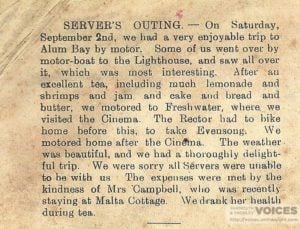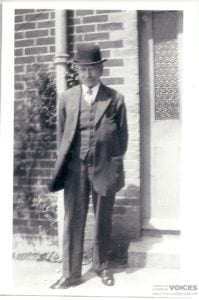I was called up in1940. I had instructions to go to Newport Station and wait there. I went there and was met by Army people and they said they were waiting for trains to come from other parts of the Island, could we come back in an hour. There was one or two of us there and we went off and had a drink. When we come back they had a lorry there and loaded us in, and where do you think they brought us to – Golden Hill!
I was in the Hampshire Regiment. I was in for just about six years, I travelled about all over the place. I didn’t go overseas until just after D Day.
A few days after D Day we went to Southampton and were transported across to Normandy. We went to where the British went ashore near Caen and it wasn’t long before we were moved up to where the battles were, to Hill 112. It was said whoever had charge of Hill 112 was in charge of Normandy. We had a battering there, constant shelling at night. When we went there I had a section of 6; when we came away there was four of us. We spent some time there defending that, several night skirmishes, attached to the 43rd division. We then went to a place called Montpinchon. Going up one side a Mortar Shell landed. Next thing I knew I was picking myself out of the ditch on the other side of the road. I staggered around for a bit and then a medical car picked me up and that was the end of the fighting for me, I still have shrapnel in my chest. I was treated for several weeks and then at Queen Elizabeth Hospital Birmingham, it was decided not to operate to remove the shrapnel.
I went to Chester, a big place for a lot of wounded who were getting better. I managed to get away to a couple of football matches while I was there and then moved down to Colchester where we took out German Prisoners to work on farms. That was a very boring sort of a turn out, just walking out with them and then taking them back. Next place was just outside Worksop, where I was instructor for small arms firing until I was demobbed.
While there I was able to get around. I went to a game of football at Bramall Lane,’’ even managed to get to a cricket match. Phil Kelsey b 1920






